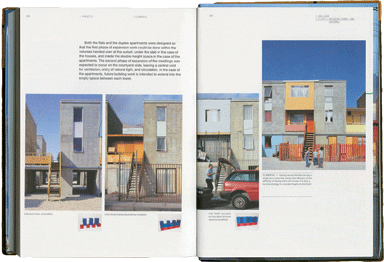
words Charles Holland
This latest, sixth volume of architecture “boogazine” Verb begins with a familiar kind of declaration: “Faced with unprecedented political, social, economic, cultural and environmental challenges Verb Crisis recognises that architecture cannot carry on as usual.”
It’s easy to affect a jaded cynicism before this kind of rhetoric – after all haven’t we always been faced with unprecedented challenges? When did anyone ever say: “Don’t worry, the world’s fine as it is, let’s all go back to bed.” But Verb backs its claim up, eschewing the usual suspects, addressing instead some genuinely thoughtful and provocative work.
The book focuses on a few key cities: Dubai, Madrid and Detroit. Detroit in particular is fascinating and represents the opposite problem to that of Dubai. Instead of relentlessly spiralling levels of development, there is depopulation and an emptying out of the city. New York-based architects Interboro Partners’ contribution not only documents this process but finds, hidden below the surface, a new kind of development occurring there.
They describe the process of what they call “blots” – vacant plots where houses have been knocked down. These blots have been absorbed into neighbouring properties, becoming gardens, additional parking, recreation areas and, in some cases, complex architectural extensions. As the city empties, little bits of ad hoc DIY urbanism grow back between the cracks. As Interboro say, this is important, “however unspectacular”.
This combination of empirical research and pragmatic response – actually looking at the city to see what it is like as opposed to wishing it were something else – is a strong theme in all the work included. There is a valuable sense here of architects engaging with the processes by which cities develop, and with the needs of their inhabitants.
Geographer and architect John May describes the Staten Island landfill site of Fresh Kills, recently the subject of a high profile architectural competition to turn its vast piles of trash into a new park. May raises pertinent and uncomfortable questions about architecture’s complicity in such boosterism, and its role in supplying the glossy images to go along with venal developments. He also exposes the hollow posturing of the profession, the endless posing as “radical” or “cutting edge” by an architectural avant-garde long since removed from any sense of social purpose.
The most impressive project included is perhaps also the most modest: architecture collective Elemental’s social housing scheme in Chile. This project for 100 new houses allows for residents to expand and adapt their homes over time, simply by building less of each one and letting the owners fill in the gaps when they can afford to do so. Photographs show the spaces filling up with lean-tos, bay windows and bolted on extensions. They are reminiscent of Le Corbusier’s famous housing scheme at Pessac after the residents had added window boxes and pitched roofs – except here the adaptations are a deliberate and positive part of the story.
Verb Crisis is purposely un-glossy. With a brown plastic wipe-clean cover – like a welding manual – and a straightforward lay out, it contains relatively few flashy drawings. If you ever wondered whether there were any architects left with a sense of critical or social engagement, or an interest in the wider political and economic realities of their practice, then Verb Crisis is worth a look.
Verb Crisis is published by Actar, €29
www.actar.com

A spread showing Elemental’s housing project in Iquique, Chile

















